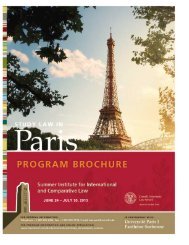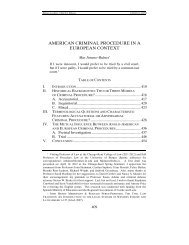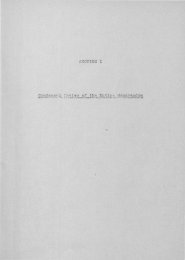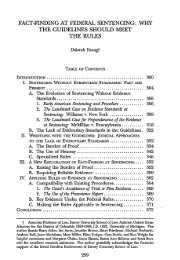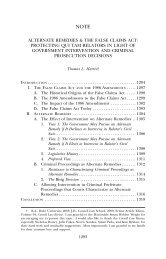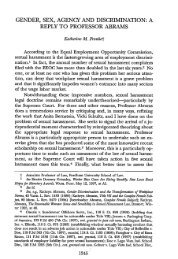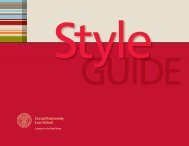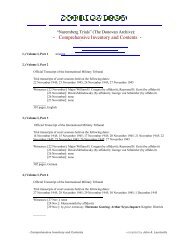JUDICIAL CLERKSHIP HANDBOOK - Cornell University Law School
JUDICIAL CLERKSHIP HANDBOOK - Cornell University Law School
JUDICIAL CLERKSHIP HANDBOOK - Cornell University Law School
You also want an ePaper? Increase the reach of your titles
YUMPU automatically turns print PDFs into web optimized ePapers that Google loves.
http://www.lawschool.cornell.edu/publicservice/Public‐Service‐Career‐Planning‐<br />
Resources.cfm (username: cls\career‐web; password: office‐2k) The Guide contains a<br />
useful application deadline Quick Reference Chart.<br />
Current 2L students: be aware that some state courts clerkship deadlines fall before the<br />
federal target application date of September 6. Some deadlines fall in the spring of your 2L<br />
year. If you are interested in clerkships in any of the following states, check the Vermont<br />
Guide for application information ASAP: Alabama, Arkansas, Colorado, Connecticut,<br />
Georgia, Guam, Hawaii, Indiana, Iowa, Kansas, Kentucky, Louisiana, Maine, Maryland,<br />
Minnesota, Nevada, New Hampshire, New Mexico, North Dakota, Ohio, Pennsylvania, South<br />
Dakota, Tennessee, Utah, Virginia, Washington (state), and Wisconsin.<br />
NUMBER OF APPLICATIONS TO FEDERAL JUDGES<br />
No hard and fast rules dictate the Aright@ number of applications. As explained later in this<br />
handbook, some federal judges accept on‐line applications only and some accept hard copy<br />
applications only. Generally, you should plan to prepare applications to between 100‐200<br />
judges total (on‐line and hard copy combined) for the initial application receipt date. Fewer<br />
than 50 means you are probably being too selective (and increasing the chance of getting<br />
nothing); more than 200 usually means you haven=t been selective enough. Indeed,<br />
because of the burden processing faculty recommendation letters places on staff you may<br />
not apply to more than 200 federal judges for the initial application receipt date without<br />
the approval of a member of the Clerkship Committee. This approval will be given only in<br />
unusual circumstances.<br />
There will be a limited number of federal judges who solicit applications weeks or even<br />
months after September. Once you register on the Online System for Clerkship Application<br />
and Review (OSCAR) you automatically receive email notices when these positions become<br />
available. If you plan to continue submitting clerkship applications via OSCAR, consult<br />
Assistant Dean Comstock or Elizabeth Peck for logistical guidance.<br />
NUMBER OF APPLICATIONS TO STATE JUDGES<br />
The number applications you should send to state court judges is guided by (1) the state(s)<br />
in which you plan to practice after your clerkship and/or to which you have ties, and (2) the<br />
types of courts to which you are applying. For some students who have narrowed their<br />
focus to one state and who seek to clerk only on the court of last resort in that state, the<br />
total number of applications may be in the single digits. However, when a student is open<br />
to clerking in more than one state and is interested in both trial and appellate level courts,<br />
the number of state court applications can be very high. Because state court clerkship<br />
applications always require hard copy letters of recommendation be prepared by law school<br />
staff, students are limited to 100 individual state court clerkship applications without<br />
approval of a member of the Clerkship Committee. Note that in states like New Jersey in<br />
which students send in one application to a central administrative office for dissemination<br />
to judges around the state, that application will be treated, for purposes of the limitation<br />
8 | P age



